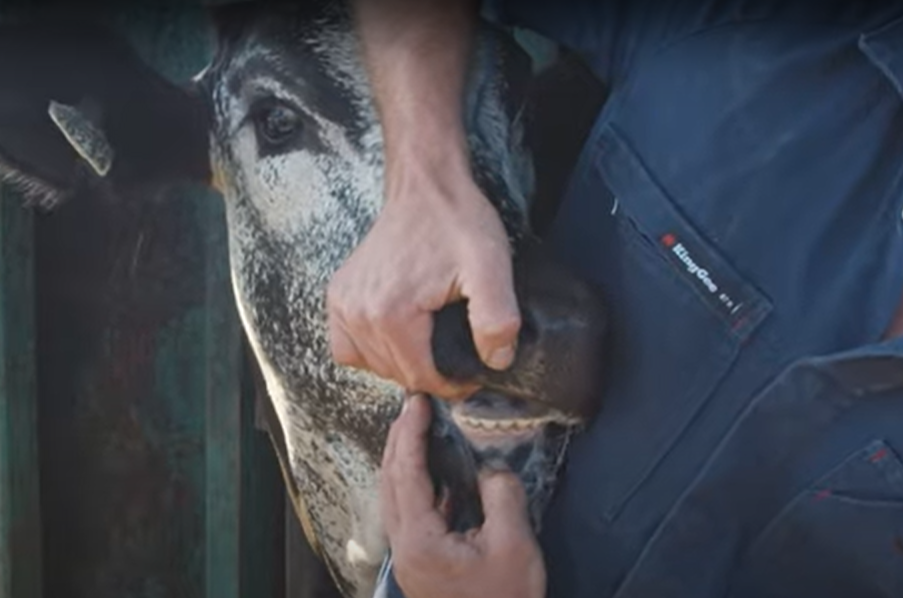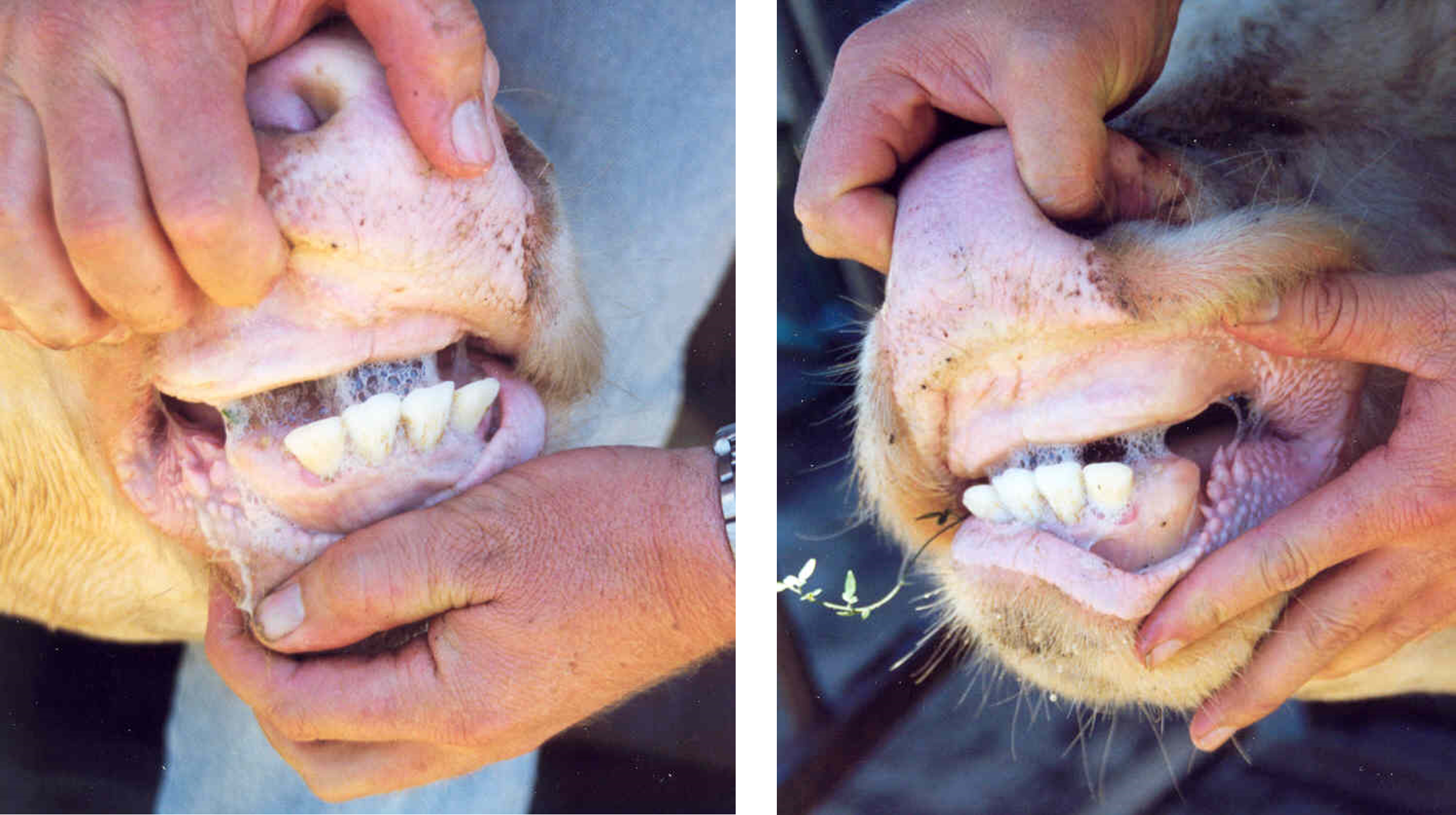Ageing cattle by their teeth
Age is an important part of livestock trading as many markets have age limits. The age of an animal can be determined by counting the number of permanent incisor teeth, and is the most common method of determining approximate age in live cattle. Note: MSA grading uses bone ossification, which is assessed on the carcase in the meat works. Obviously this method cannot be used on live animals.
Cattle, like many animals, start life with baby or milk teeth. From about two years of age these teeth are replaced with permanent teeth. Permanent teeth erupt in pairs starting with the centre pair. A tooth is considered to have ‘erupted’ when it has broken through the gum. A pair is considered to have ‘erupted’ when the first tooth of a given pair has broken through the gum.

The age of an animal is often referred to by the number of permanent teeth. An animal with only milk teeth is called a ‘milk tooth’, an animal with two permanent teeth is a ‘2 tooth’ and so on until they have a full set of eight permanent teeth when they are said to be an ‘8 tooth’ or ‘full mouth’.

The range in age at teeth eruption varies enormously from beast to beast due to individuality, breed, nutrition and climatic influences. Cattle, such as British-bred cattle, that exhibit early sexual maturity (puberty) experience teeth eruption at younger ages than late maturing cattle, such as Brahman cross cattle.
A guide for estimating the age (in months) of cattle by dentition
| Teeth | Breed | Average age at eruption (months) | Average age at eruption (months) |
|---|---|---|---|
| 2 tooth | British cattle Brahman cross | 24 26 | 21–27 23–29 |
| 4 tooth | British cattle Brahman cross | 31 33 | 26–36 28–38 |
| 6 tooth | British cattle Brahman cross | 38 41 | 32–44 35–47 |
| 8 tooth | British cattle Brahman cross | 46 51 | 39–54 43–58 |
This table shows that a beast with four permanent incisor teeth could be as young as 26 months or as old as 38 months.
Despite this inaccuracy, dentition (or teeth counting) is still a useful way to assess cattle age.
Below are visual representations of cattle dentition, courtesy of AUS-MEAT Limited.
0 tooth
2 tooth
4 tooth
7 tooth
8 tooth
Written by Russ Tyler, formerly Queensland Government.




